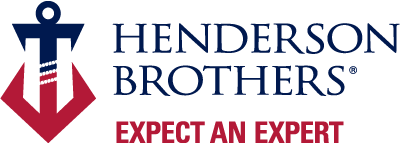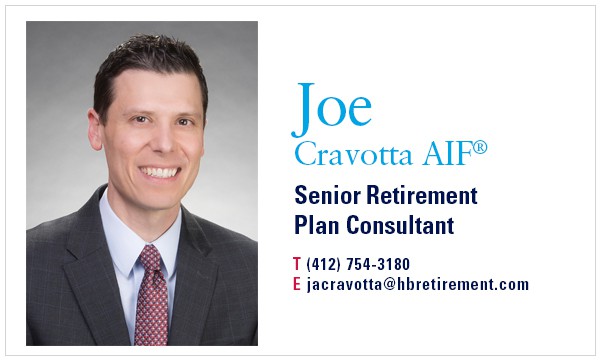by Joe Cravotta, AIF®, Senior Retirement Plan Consultant at HB Retirement
With benefits evolving, financial wellness emerging and a war for talent raging, employers must evaluate if their retirement programs are keeping pace with the changing marketplace to ensure they are meeting the needs of current and future employees.
Today, employers are shouldering increased financial responsibility as awareness grows about the obstacles preventing employees from saving enough to retire or be financially healthy. Delayed plan eligibility, drawn-out vesting schedules, frequent job changes and increasing Social Security age requirements are the primary retirement pressure points.
The convergence of these issues along with the need to be competitive in a tight labor market – U.S. job openings hit a record 11.5 million in March 2022 – have resulted in a measurable shift in employer contributions, eligibility periods, vesting schedules and ancillary benefits.
Employer Contributions and Matches
A major change in recent years is employers upping their contributions to employee retirement plans.
Taking into account Social Security, employees need to save 12% to 15% of their salaries across their careers to have a comfortable replacement income in retirement. A well-structured employer retirement plan will help them get to that number by approaching employee and employer contributions holistically rather than separately.
The most popular formula[1] has been employers matching 50% of employee contributions up to 6% of the annual salary. This is known as a stretch match – where an employee receives less than 100% matching contributions on their deferrals.
Employers are now taking the concept of the stretch match further. More employers are offering higher match amounts, but requiring employees to also increase their own deferrals.
In a 50% on 8% match, for example, the employee will have a combined 12% in annual savings – 8% employee funds and 4% matching funds. This is within the target range for a comfortable retirement income.
The tiered match, where the employer contribution varies based on the employee contribution also continues to be used frequently. The most common tiered formula[2] is currently 100% on the first 3%, and 50% on the next 2% of contributions While this match structure does not quite get participants to the optimal savings rate, it offers other benefits to the employer. This match structure (along with a few other requirements), qualify the plan for safe harbor status. This allows the employer to bypass certain non-discrimination testing requirements.
Eligibility Periods
The time between when employees join a company and when they can begin participating in a retirement plan has been shortening, with the normal eligibility period now ranging from immediate to three months.
There are several factors behind the shift. Before automation, it was a heavy administrative lift for employers to maintain small-balance retirement accounts for employees who left the company soon after being hired. That caused many employers to require at least 6 month or more of employment before eligibility kicked in. Advances in technology and a law that allows employers to cash out accounts with balances less than $5,000 have eliminated many of the administrative hassles.
Concurrent with the shift in methodology has been an evolution in thinking and awareness about the biggest enabler of saving enough for retirement – time. With employees changing jobs frequently or not taking advantage of employer retirement plans, they are significantly limiting their ability to save for retirement. In response, employers are lowering the barriers to plan entry.
Vesting Schedules
Like eligibility periods, vesting schedules are also getting shorter. Almost two-thirds of retirement plans are now on a three-year-or-less vesting schedule, and immediate vesting accounts for nearly 35% of all plans.[3]
Employers have long believed that a lengthy vesting schedule was an effective retention tool since employees would not leave the organization before they could take their matching funds with them. With today’s employees typically staying put for a shorter period of time, a long vesting schedule is a strong deterrent to plan participation, talent recruitment and employee retention.
By offering an immediate or short vesting schedule, employers are incentivizing employees to participate in a retirement plan and help improve their long-term financial wellness.
Ancillary Benefits
Employers are increasingly understanding that underlying factors may prevent employees from participating in a retirement program. Grappling with credit card debt, student loans and a lack of emergency savings, employees may choose to funnel would-be retirement savings into rectifying these issues instead. To address this, employers are starting to offer ancillary benefits that help shore up employee savings, freeing up funds to put toward retirement.
Emerging in the last 10 years, employee financial wellness is now dominating the retirement dialogue. Employers are starting to integrate financial wellness programs into their more traditional wellness programs.
A common tool used in a financial wellness program is an online employee survey that assesses savings, insurance, debt level, financial stress and other factors.
Employees receive a financial wellness score and access to information and education to address identified areas of opportunity. The automated system also gives employees the ability to track their progress.
At HB Retirement, we have found that such a financial wellness program typically increases success when coupled with access to a financial advisor. The advisor reviews the assessment results with an employee, providing actionable insight on retirement planning and debt reduction.
Some companies also have implemented emergency savings programs, where employees can have a set amount deducted from their paycheck and placed into a savings account. This helps employees build up emergency funds while also getting comfortable with saving on a regular basis.
Automated paycheck deductions for student loans are another avenue to open up extra dollars for retirement. The federal SECURE Act 2.0, which is awaiting Senate approval following passage by the House of Representatives, includes a provision that will help mitigate the financial stress of student loans on retirement savings by allowing employers to make matching retirement contributions based on an employee’s student loan payment.
Evaluate Regularly
With the breadth and speed of changes occurring in the retirement space, the days of “set it and forget it” are over. Employers must conduct a thorough analysis of their retirement plan every one to two years, evaluating how it stacks up against benchmarks for their industry, geographic region, competitors and similar-sized companies.
Short eligibility periods and vesting schedules, wholistic employer/employee contributions and ancillary benefits will help attract new talent and strive to ensure existing employees can experience financial wellness now and throughout their retirement.
Take Action
Find out if your retirement benefits are keeping pace with marketplace trends and employee expectations. Talk to a qualified retirement plan specialist today.
[1]Source: Vanguard’s 2022 How America Saves
[2]Source: Vanguard’s 2022 How America Saves
[3] Source: PLAN SPONSOR Defined Contribution Survey 2021
This information is not intended as authoritative guidance or tax or legal advice. You should consult your attorney or tax advisor for guidance on your specific situation. In no way does advisor assure, that by using the information provided, plan sponsor will be in compliance with ERISA regulations.
Securities and Retirement Plan Consulting Program advisory services offered through LPL Financial, a registered investment advisor, member FINRA/SIPC. Other advisory services offered through HB Retirement, a separate entity.
Please note that the information contained in this posting is designed to provide general awareness in regard to the subject matter covered. It is not provided as legal, medical, or tax advice, nor is it intended to address all concerns in your workplace or for public health. No representation is made as to the sufficiency for your specific company’s needs. This post should be reviewed by your legal counsel or tax consultant before use.



